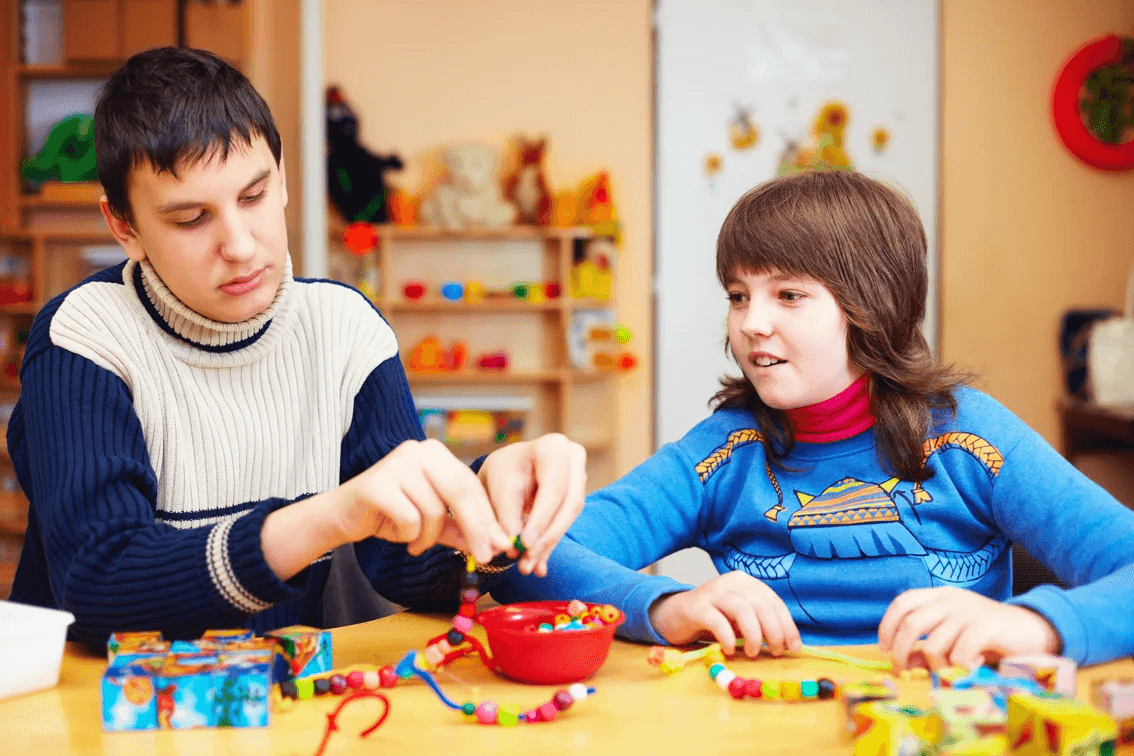ADHD: How to Support a Child with ADHD Daily?
"Mom, I forgot my notebook... again!" - "Dad, I can't concentrate!" - "Why do I always have to repeat the same thing?"
Do these phrases sound familiar? If you are a parent of a child with ADHD (Attention Deficit Hyperactivity Disorder), you probably know them by heart. And you are not alone in this situation: in France, between 3 and 5% of children live with this neurodevelopmental disorder.
Brushing teeth can sometimes be complicated!
At Pictalk, we created our tools thinking of Pablo, our little brother with Down syndrome. But over the years, we discovered that our solutions also greatly help families of children with ADHD. Why? Because, like Pablo, these children need visual cues, structure, and visibility to flourish.
In this article, we share what we've learned: concrete tips, tested by real families, to turn sometimes chaotic daily routines into more peaceful moments.
How to support your child's daily life
Create a reassuring environment
Rules, yes, but not a 50-page manual!
- Display 3-5 essential, simple, and positive rules
- Use short and concrete sentences
- Place rules at child's eye level, clearly visible
Work space: simple as pie
Forget the perfectly organized Pinterest desk with 20 colored pencil jars. Your child with ADHD needs the bare minimum:
- A table
- A chair
- Today's homework
- A working pen
- A glass of water
The rest? Tucked away in a drawer or another room. Because that dinosaur figurine lying around will definitely become more interesting than math!
Communication that makes all the difference
Stop the "loudspeaker" mode
How many times have you yelled "Put on your shoes!" from the kitchen while your child was looking at clouds through the living room window?
The proven technique we learned with Pablo: move to their height, establish eye contact, and THEN speak. One instruction. One only.
"Go get your shoes" → he comes back → "Now, put them on" → done → "Great, we can go!"
The magic of "Bravo!"
Do you know what transforms a difficult day? Surprising your child when they do something well — even tiny — and telling them.
"I saw you tidied your Lego without being asked, that's great!" "You remembered to take your snack by yourself this morning, well done!"
These small phrases change everything. Truly.
Creating an effective routine for a child with ADHD
Why your child NEEDS routine (and you too)
Imagine waking up every morning not knowing whether you’ll drive right or left, whether red lights mean stop or go. Tiring, isn’t it?
This is exactly what a child with ADHD experiences without routines. Their brain expends a crazy amount of energy trying to understand "what will happen now". With a clear routine, that energy can finally be used for something else: learning, playing, growing.
How to create routines that really work
1. Start small and dream big
You don’t go from total chaos to military precision overnight. Choose ONE routine — mornings often work well because everyone is rested.
2. Make it visual (because words fly away)
Do you know the power of pictograms? At Pictalk, we’ve loved them from the start. Pablo understands immediately what he needs to do thanks to images.
For a child with ADHD, it’s the same: seeing "brush teeth" in an image is clearer than hearing it three times in a row.
3. Include what makes them happy
A routine isn’t a chore! Add fun moments:
- Their favorite song while getting dressed
- A breakfast they love
- Five minutes of cuddles before leaving
- The right to choose their socks (even striped ones with stars!)
Digital tools that make a difference
Pictalk Buddy: our solution designed for you
When we developed Pictalk Buddy for Pablo, we didn’t know it would help so many families of children with ADHD. But it makes sense: like Pablo, your child needs:
Visual schedule that travels everywhere
- No more paper planners stuck on the fridge
- Your child can see their schedule on your phone, tablet, or at school
- Real-time updates if plans change
Reminders that don’t forget you
- "In 10 minutes, it’s time to get ready for the bath" — with the app’s gentle voice
- Built-in visual timer to see the passing time
- No more need for human wake-up calls!
Personalization for YOUR family
- Photos of your child in their favorite activities
- Pictograms chosen together
- Option to print for grandparents or school
Pictalk Buddy is available on phone, tablet, and smartwatch (for more discretion).
Pictalk AAC: when words are difficult
Some children with ADHD also have difficulties expressing themselves, especially when frustrated or tired. Pictalk AAC gives them a voice:
- Express "I am tired" without a meltdown
- Ask for help when difficult
- Share their day with images and words
"My son can now tell me he needs a break before exploding. That changes everything." - Sarah, mother of Lucas, 8 years old
Real life: when things don’t go as planned
When your child "blows a fuse"
Let’s talk about what no one talks about: moments when everything falls apart. Your child screams, refuses everything, you are exhausted. It’s normal. It happens to EVERY family.
What helps in these moments:
- Breathe (you first)
- Don’t take their words personally ("You’re useless!" doesn’t reflect what they really think)
- Offer a "calm corner" where they can unload their excess
- Wait for the storm to pass, then talk about it
The mistake we all make
Wanting everything to be perfect, all the time. But perfection is the enemy of progress! Your child forgot their pencil case? No big deal. They took 20 minutes to lace up their shoes? They made it.
Celebrate small victories. They matter more than you think.
Customized support, day by day
What we learned with Pablo (and all the families who trust us)
Every child is unique. Techniques that work for your neighbor might not work for you. And that’s normal!
The important thing is to try, adjust, and repeat kindly. Toward your child, but also toward yourself.
Keys that truly work
Routine = security Clear visual cues that reassure and structure the day
Appropriate tools = independence Timer, pictograms, apps... everything that helps your child take an active role in their day
Positive communication = confiance Valorize efforts rather than criticize failures
Patience = progress Accept your child's rhythm, ups and downs
You are not alone
Behind every Pictalk tool, there is a family. Parents like you looking for solutions, adapting, and never giving up.
Pablo taught us that differences are not obstacles, but alternative paths to fulfillment. Your child with ADHD might teach you creativity, resilience, and joy of living in the present moment.
Feel free to share your experience with us. Because together, we always find better solutions.

